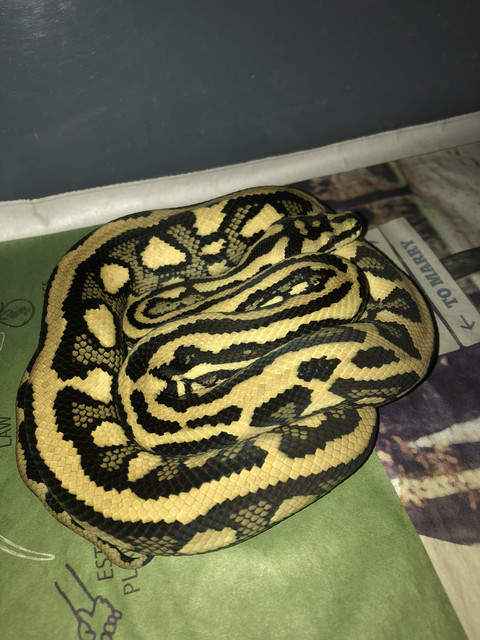Just want to say, as a lurker of this thread, there is some really interesting and helpful information here! Definitely going to ensure my hides are more snug next cleaning day. (Thanks
@Bluetongue1 - as a newer keeper, I was only looking at hides from the perspective of giving my snakes a place to go to get away from me - you raise interesting points about a place where they can maintain as much body temp as possible when they retire at night - thanks for this. Going to review and downsize a few of my hides next clean, esp bc its so cold in Vic atm)
@GBWhite - Such great info re: metabolic systems and impacts of frequent feeding. Thank you! As a python rookie, one can get so 'excited' seeing pythons feed (given that they don't do much else, esp GTP's) that they over do it. Also many first time keepers are used to having / keeping other pets/animals, so may have an incorrect mindset re: feeding frequency, because of their experience with other species. My snakes all aren't eating. Was worried week one. But instead of repeatedly offering rats / mice, I have been reading much on the forum from the likes of yourself,
@Pauls_Pythons @Stompsy @Scutellatus both here in this thread and in much older threads and have decided I am not going to get worried til after winter, if at all. It seems the general consensus is, a drop in feeding in the long run is better health wise or has no health effects at all, opposed to overfeeding - so will wait for signals of snake looking for food, however long that may take and then offer. Going to feed my snakes with a life long approach in mind, not isolate each feed or rejected feed and try over compensate just to bring on other health issues down the track. Will let them do their thing and I’ll take their cue.
George, or anyone, what are some health problems that may be raised due to over feeding? I know this may sound stupid, but are captive carpets known for a higher rates of tumours in intestinal tract, opposed to wild ones? If yes, is this related to captive over feeding?
Also (Sorry to derail thread) last night I was watching a netflix doco on the feral burmese pythons in the Everglades, the doc said that they are opportunistic feeders and will take out native birds and animals even if not hungry because they don't know when their next meal will be. Is this typical behaviour of Australian snakes too? Everything else I am reading here on the forum says that snakes only eat in the wild when hungry, so therefore don't over feed them in captivity. Not being contrary, just really interested in learning. And don’t understand the discrepancy in opinion. Sorry in advance if its a dumb question. Are the Pythons we are keeping here in Aus opportunistic feeders?
(Also, aware not everything on TV is correct, the same doc also said pythons dislocate their jaws...)
[doublepost=1529397822,1529396867][/doublepost]edit: My exotic specialist vet said that tumors are very common in carpets, I wasn't sure and forgot to ask if this was the case in all carpets including wild or captive only due to over feeding, genetic weakness within breed line and or husbandry issues?




